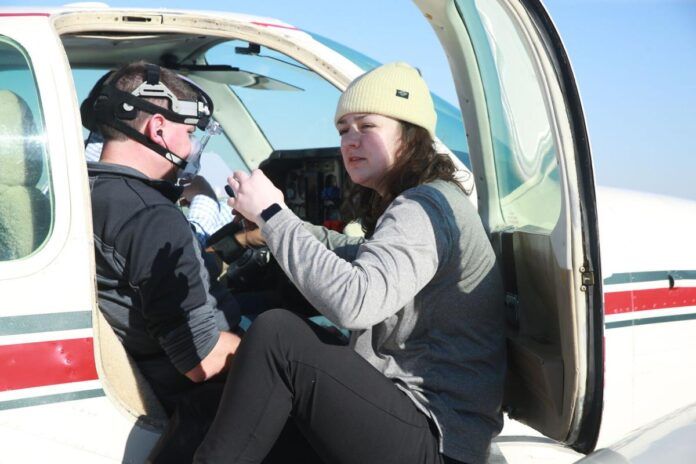A renowned show and warbird pilot is behind an experiment to see if a device normally used to enhance sleep can also keep pilots more alert while flying. Doug Rozendaal is working with doctors and researchers at MercyOne North Iowa Medical Center and the Mayo Clinic to see if use of a bilevel positive airway pressure machine will boost blood oxygenation and lessen the chance for hypoxia for those flying near the oxygen supplementation limit of 12,500 feet. BiPAPs create positive pressure in the lungs to reduce sleep apnea. “Actually, this was my idea to try this to see if BiPAP could increase oxygenation at altitude because I fly a lot,” Rozendaal told the Mason City Iowa Globe Gazette. ”Using oxygen is a pain because your tank is always empty.”
Rozendaal said he normally flies his Baron at 8,000 feet to be on the safe side but if the BiPAP can increase oxygenation he’d rather be higher. “If can fly at 12k that would allow me to get above weather, get better winds and fuel economy. It just allows for a lot more flexibility,” he said. Last week he took off with three passengers, two of whom were masked up with portable BiPAPs. The third was a researcher who tested their cognitive and physiological response to being at 8,000 and 12,000 feet with the masks on. The results will be compared with baseline data obtained from the test subjects on the ground.




































Having used CPAP for over twenty years – there are a couple of potential side effects that anyone trying bipap while flying should be aware of. (CPAP and BIPAP are cousins separated by different air pressure approaches.)
Dry eyes – easily fixed in most cases by using over the counter eye drops.
GERD (Gastroesophageal reflux disease) – CPAP treatment can increase acid reflux. For me, I have found that drinking tomato juice can reduce the GERD symptoms (my Doctor is still is doubtful that this works – but it works for me).
There are other potential side effects but these are the ones that affect me.
Brian Little
Marion, Iowa
Flying with supplemental oxygen would be a better idea.
There are some good systems from Mountain High Oxygen.
An example provides 9.5 hours of breathing at 15,000 feet from a 5.4 pound bottle of oxygen.
It’s only $1200.
I’m sure my experience level is nowhere near that of the subject of this article, but somehow I have been able to determine the correct action is to fill my oxygen tank as necessary. That’s been working for me for as long as I’ve been flying my glider, which has been quite some time.
I would be interested to find out if a portable oxygen “concentrator” as used by some suffering from COPD would operate at high(er) altitudes. I would be much more likely to go with that solution – a shoulder bag + cannulus – than the gadget described here.
I have an even cheaper solution: Ram air. It only works on a Cessna with the ‘juice can’ ventilation, but focusing the air flow from the ventilator on my face increases my blood O2 saturation from 90-92% to 98% at 10,000 ft. I have tested this multiple times crossing the Cascades and Rockies, using a pulse oximeter
I’m a physician and an AME with high altitude training.
BiPAP may help a little. It simulates a pressurized cockpit for the user and it’s safe enough so likely worth trying but I think the pressure differential will not be adequate to provide a statistically significant result.
My hypothesis is is the increased inhalation pressure increases respiratory volume. 10 cm H2O is only about 250 ft of altitude, but it can have a significant impact on respiratory volume.
All interesting ideas, doubt the FAA would approve any. Like a lot of other things in aviation, just do what works. I used to take breaths from the Emer mask in the Citation on long trips to help stay alert. I just did some skydiving loads this year from 17,500ft using O2 from a cannula. Surprised how well that worked.